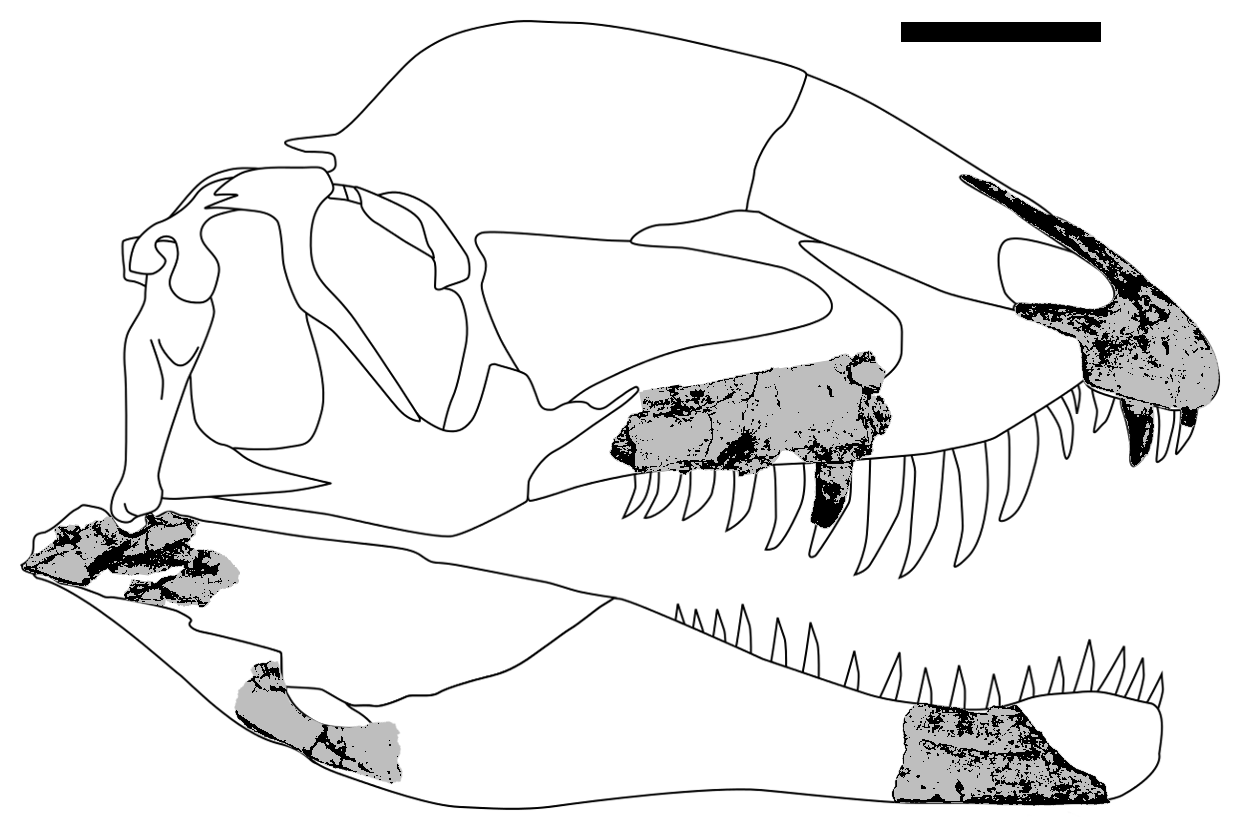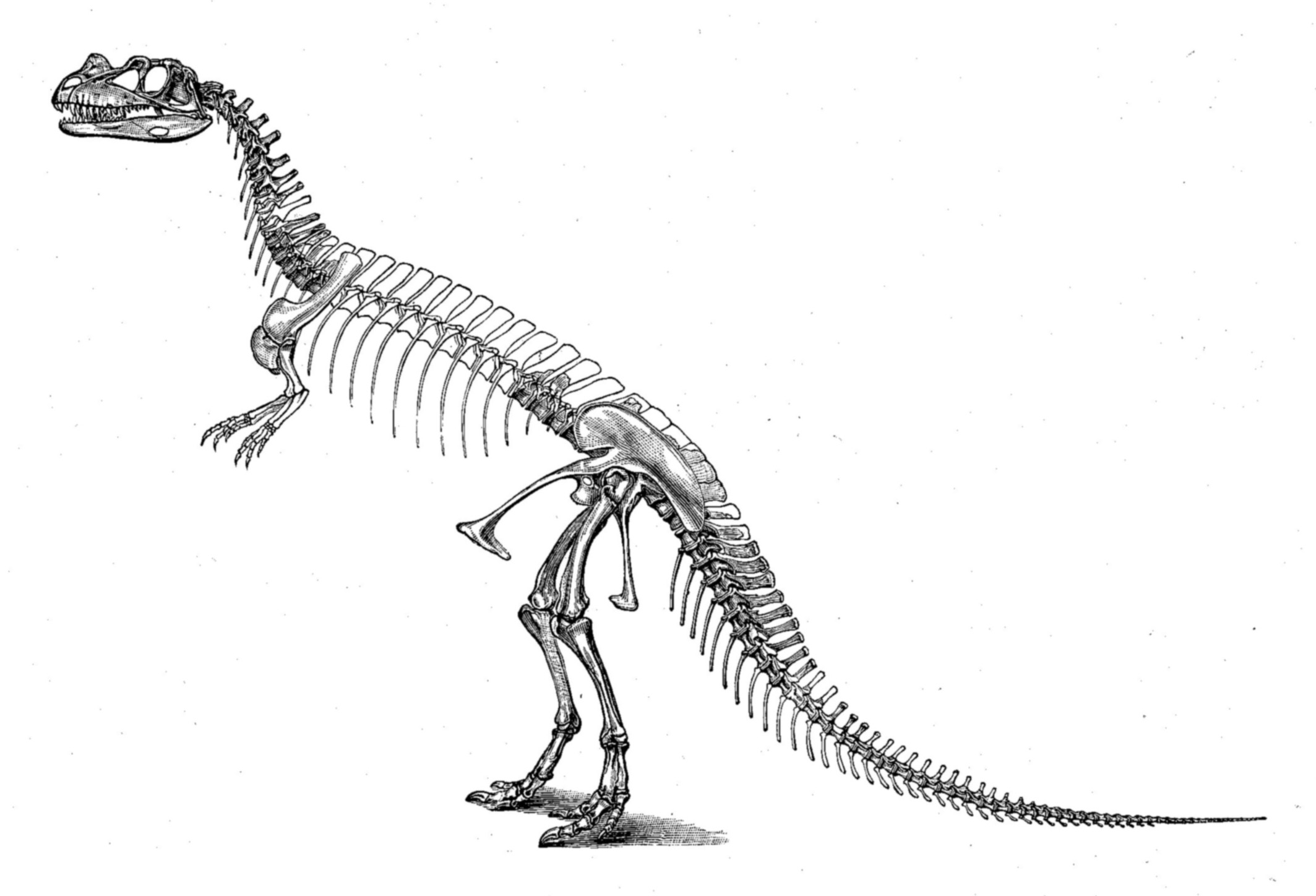|
Berberosaurus Liassicus
''Berberosaurus'' (meaning "Berber lizard", in reference to the Berbers of Morocco) is a genus of neotheropod dinosaur, possibly a ceratosaur, from the Early Toarcian-age (Lower Jurassic) Azilal Formation found in the High Atlas of Toundoute, Ouarzazate, Morocco. The type species of the genus ''Berberosaurus'' is ''B. liassicus'', in reference to the Lias epoch. ''Berberosaurus'' might be the oldest known ceratosaur, and is based on partial postcranial remains. Classification Ronan Allain and colleagues, who described ''Berberosaurus'', performed a phylogenetic analysis and found their new genus to be the most basal known abelisauroid, more derived than ''Elaphrosaurus'', ''Ceratosaurus'', and ''Spinostropheus'', but less so than ''Xenotarsosaurus'' and abelisaurians. ''Berberosaurus'' is distinguished from other theropods by anatomical details found in its vertebrae, metacarpals, and hindlimb bones. Its assignment as an abelisauroid pushes back the record of this group and shows ... [...More Info...] [...Related Items...] OR: [Wikipedia] [Google] [Baidu] |
Toarcian
The Toarcian is, in the ICS' geologic timescale, an age and stage in the Early or Lower Jurassic. It spans the time between 182.7 Ma (million years ago) and 174.1 Ma. It follows the Pliensbachian and is followed by the Aalenian. The Toarcian Age began with the Toarcian turnover, the extinction event that sets its fossil faunas apart from the previous Pliensbachian age. It is believed to have ended with a global cooling event known as the Comptum Cooling Event, although whether it represented a worldwide event is controversial. Stratigraphic definitions The Toarcian takes its name from the city of Thouars, just south of Saumur in the Loire Valley of France. The stage was introduced by French palaeontologist Alcide d'Orbigny in 1842, after examining rock strata of this age in a quarry near Thouars. In Europe this period is represented by the upper part of the Lias. The base of the Toarcian is defined as the place in the stratigraphic record where the ammonite genus '' Eoda ... [...More Info...] [...Related Items...] OR: [Wikipedia] [Google] [Baidu] |
Phylogenetics
In biology, phylogenetics (; from Greek language, Greek wikt:φυλή, φυλή/wikt:φῦλον, φῦλον [] "tribe, clan, race", and wikt:γενετικός, γενετικός [] "origin, source, birth") is the study of the evolutionary history and relationships among or within groups of organisms. These relationships are determined by Computational phylogenetics, phylogenetic inference methods that focus on observed heritable traits, such as DNA sequences, Protein, protein Amino acid, amino acid sequences, or Morphology (biology), morphology. The result of such an analysis is a phylogenetic tree—a diagram containing a hypothesis of relationships that reflects the evolutionary history of a group of organisms. The tips of a phylogenetic tree can be living taxa or fossils, and represent the "end" or the present time in an evolutionary lineage. A phylogenetic diagram can be rooted or unrooted. A rooted tree diagram indicates the hypothetical common ancestor of the tree. An un ... [...More Info...] [...Related Items...] OR: [Wikipedia] [Google] [Baidu] |
Dracovenator
''Dracovenator'' () is a genus of neotheropod dinosaur that lived approximately 201 to 199 million years ago during the early part of the Jurassic Period in what is now South Africa. ''Dracovenator'' was a medium-sized, moderately-built, ground-dwelling, bipedal carnivore, that could grow up to an estimated in length and in body mass. Its type specimen was based on only a partial skull that was recovered. Discovery The type material BP/1/5243 for ''Dracovenator'' was discovered at the "Upper Drumbo Farm" locality in the upper Elliot Formation which is part of the Stormberg Group in Eastern Cape Province, South Africa. It was collected by James Kitching and Regent "Lucas" Huma in sandstone that was deposited during the Hettangian stage of the Jurassic period, approximately 201 to 199 million years ago. The paratype material BP/1/5278 (originally assigned to ''Syntarsus rhodesiensis'') was discovered in 1981, also at the Elliot Formation in pinkish-maroon silty mudstone that w ... [...More Info...] [...Related Items...] OR: [Wikipedia] [Google] [Baidu] |
Dilophosaurus
''Dilophosaurus'' ( ) is a genus of theropod dinosaurs that lived in what is now North America during the Early Jurassic, about 193 million years ago. Three skeletons were discovered in northern Arizona in 1940, and the two best preserved were collected in 1942. The most complete specimen became the holotype of a new species in the genus ''Megalosaurus'', named ''M. wetherilli'' by Samuel P. Welles in 1954. Welles found a larger skeleton belonging to the same species in 1964. Realizing it bore crests on its skull, he assigned the species to the new genus ''Dilophosaurus'' in 1970, as ''Dilophosaurus wetherilli''. The genus name means "two-crested lizard", and the species name honors John Wetherill, a Navajo councilor. Further specimens have since been found, including an infant. Footprints have also been attributed to the animal, including resting traces. Another species, ''Dilophosaurus sinensis'' from China, was named in 1993, but was later found to belong to the ge ... [...More Info...] [...Related Items...] OR: [Wikipedia] [Google] [Baidu] |
Neoceratosauria
Ceratosaurs are members of the clade Ceratosauria, a group of dinosaurs defined as all theropods sharing a more recent common ancestor with ''Ceratosaurus'' than with birds. The oldest known ceratosaur, ''Saltriovenator'', dates to the earliest part of the Jurassic, around 199 million years ago. According to the majority of the latest research, Ceratosauria includes three major clades: Ceratosauridae, Noasauridae, and Abelisauridae, found primarily (though not exclusively) in the Southern Hemisphere. Originally, Ceratosauria included the above dinosaurs plus the Late Triassic to Early Jurassic Coelophysoidea and Dilophosauridae, implying a much earlier divergence of ceratosaurs from other theropods. However, most recent studies have shown that coelophysoids and dilophosaurids do not form a clade, natural group with other ceratosaurs, and are excluded from this group. Ceratosauria derives its names from the type species, ''Ceratosaurus, Ceratosaurus nasicornis'', described by Othn ... [...More Info...] [...Related Items...] OR: [Wikipedia] [Google] [Baidu] |
Metacarpus
In human anatomy, the metacarpal bones or metacarpus form the intermediate part of the skeletal hand located between the phalanges of the fingers and the carpal bones of the wrist, which forms the connection to the forearm. The metacarpal bones are analogous to the metatarsal bones in the foot. Structure The metacarpals form a transverse arch to which the rigid row of distal carpal bones are fixed. The peripheral metacarpals (those of the thumb and little finger) form the sides of the cup of the palmar gutter and as they are brought together they deepen this concavity. The index metacarpal is the most firmly fixed, while the thumb metacarpal articulates with the trapezium and acts independently from the others. The middle metacarpals are tightly united to the carpus by intrinsic interlocking bone elements at their bases. The ring metacarpal is somewhat more mobile while the fifth metacarpal is semi-independent.Tubiana ''et al'' 1998, p 11 Each metacarpal bone consists of a bod ... [...More Info...] [...Related Items...] OR: [Wikipedia] [Google] [Baidu] |
Vertebra
The spinal column, a defining synapomorphy shared by nearly all vertebrates,Hagfish are believed to have secondarily lost their spinal column is a moderately flexible series of vertebrae (singular vertebra), each constituting a characteristic irregular bone whose complex structure is composed primarily of bone, and secondarily of hyaline cartilage. They show variation in the proportion contributed by these two tissue types; such variations correlate on one hand with the cerebral/caudal rank (i.e., location within the backbone), and on the other with phylogenetic differences among the vertebrate taxa. The basic configuration of a vertebra varies, but the bone is its ''body'', with the central part of the body constituting the ''centrum''. The upper (closer to) and lower (further from), respectively, the cranium and its central nervous system surfaces of the vertebra body support attachment to the intervertebral discs. The posterior part of a vertebra forms a vertebral arch ... [...More Info...] [...Related Items...] OR: [Wikipedia] [Google] [Baidu] |
Abelisauria
Abelisauroidea is typically regarded as a Cretaceous group, though the earliest abelisauridae remains are known from the Middle Jurassic of Argentina (classified as the species Eoabelisaurus mefi) and possibly Madagascar (fragmentary remains of an unnamed species) possible abelisauridae remains (an isolated left tibia, right femur, and right tibia) were also discovered in Late Jurassic Tendaguru Beds in Tanzania. Abelisauroids flourished in the Southern hemisphere during the Cretaceous period, but their origins can be traced back to at least the Middle Jurassic, when they had a more global distribution (the earliest known abelisauroid remains come from Australian and South American deposits dated to about 170 million years ago). By the Cretaceous period, abelisauroids had apparently become extinct in Asia and North America, possibly due to competition from tyrannosauroids. However, advanced abelisauroids of the family Abelisauridae persisted in the southern continents until the ... [...More Info...] [...Related Items...] OR: [Wikipedia] [Google] [Baidu] |
Xenotarsosaurus
''Xenotarsosaurus'' is a genus of abelisaurid theropod dinosaur that lived during the Late Cretaceous of Argentina. Discovery In 1980 geologist Juan Carlos Sciutto discovered a rich fossil site six kilometres north of the Ocho Hermanos ranch in Chubut province. Among the fossils found there were some theropod remains. Later, a team led by Argentinian paleontologist José Fernando Bonaparte recovered some more theropod bones, possibly from the same individual. In 1986, Rubén Martínez, Olga Giménez, Jorge Rodríguez and Graciela Bochatey described the theropod fossils and coined the genus and species ''Xenotarsosaurus bonapartei'' for them. The generic name is derived from Greek ''xenos'', "strange", ''tarsos'', " tarsus", and ''sauros'', "lizard", a reference to the exceptional build of the ankle. The specific name ''bonapartei'' honours Bonaparte. The type specimens (and only known fossils of ''Xenotarsosaurus'') were found in the Bajo Barreal Formation. In 1986 this for ... [...More Info...] [...Related Items...] OR: [Wikipedia] [Google] [Baidu] |
Spinostropheus
''Spinostropheus'' is a genus of carnivorous ceratosaurian theropod dinosaur that lived in the Middle Jurassic period and has been found in the Tiouraren Formation, Niger. The type species, type and only species is ''S. gautieri''. History of discovery In 1959, Albert-Félix de Lapparent excavated fossils near Oued Timmersöi, west of In Tedreft in the Agadez desert. Among the finds were the remains of a theropod. In 1960, de Lapparent, based on these, named a second species of the genus ''Elaphrosaurus'', ''E. gautieri''. The specific name (zoology), specific name honours François Gautier, the discoverer of the type locality. In 2004, Paul Sereno, John Wilson (paleontologist), John Wilson and John Conrad named a separate genus: ''Spinostropheus''. The generic name is derived from Latin ''spina'', "spine", and Greek στροφεύς, ''stropheus'', "vertebra", and refers to the epipophyseal processes of the cervical vertebrae, which are prominent and dorso-ventrally flattened ... [...More Info...] [...Related Items...] OR: [Wikipedia] [Google] [Baidu] |
Ceratosaurus
''Ceratosaurus'' (from Ancient Greek, Greek κέρας/κέρατος, ' meaning "horn" and wikt:σαῦρος, σαῦρος ' meaning "lizard") was a carnivorous Theropoda, theropod dinosaur in the Late Jurassic Period (geology), period (Kimmeridgian to Tithonian). The genus (biology), genus was first described in 1884 by American paleontologist Othniel Charles Marsh based on a nearly complete skeleton discovered in Garden Park, Colorado, in rocks belonging to the Morrison Formation. The type species is ''Ceratosaurus nasicornis''. The Garden Park specimen remains the most complete skeleton known from the genus, and only a handful of additional specimens have been described since. Two additional species, ''Ceratosaurus dentisulcatus'' and ''Ceratosaurus magnicornis'', were described in 2000 from two fragmentary skeletons from the Cleveland-Lloyd Dinosaur Quarry, Cleveland-Lloyd Quarry of Utah and from the vicinity of Fruita, Colorado. The Valid name (zoology), validity of the ... [...More Info...] [...Related Items...] OR: [Wikipedia] [Google] [Baidu] |



_dorsal_view.png)
.jpg)

